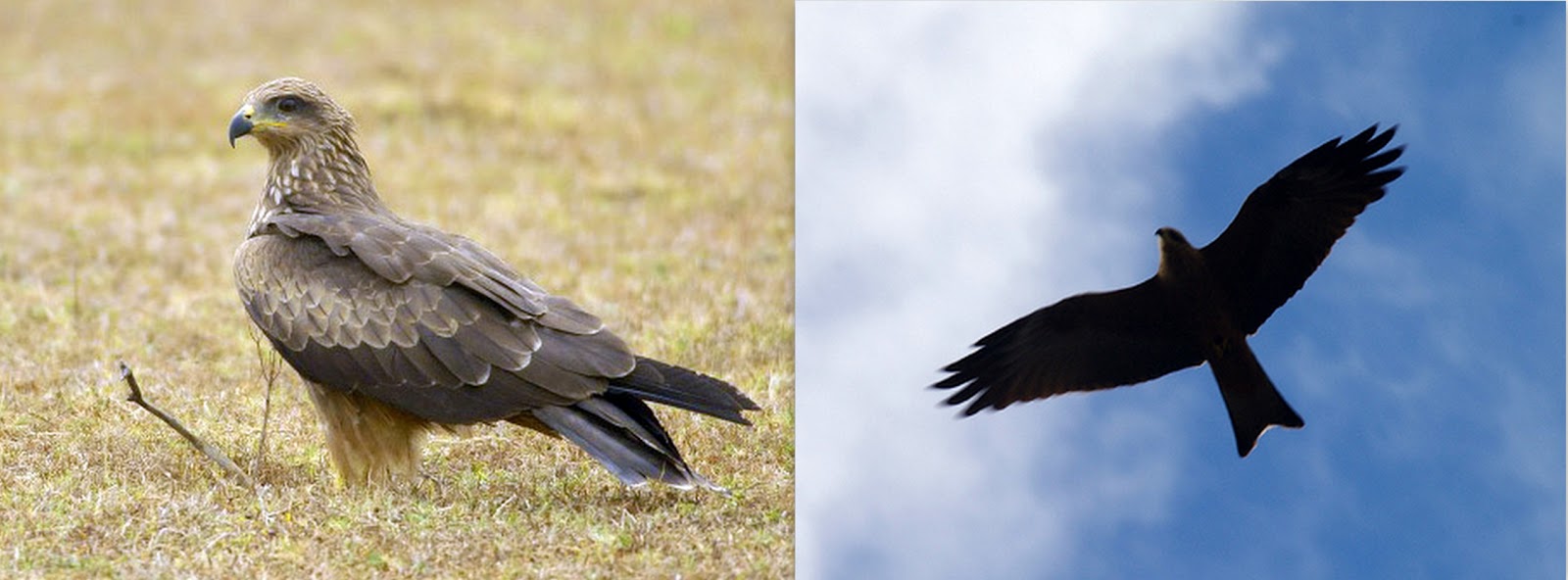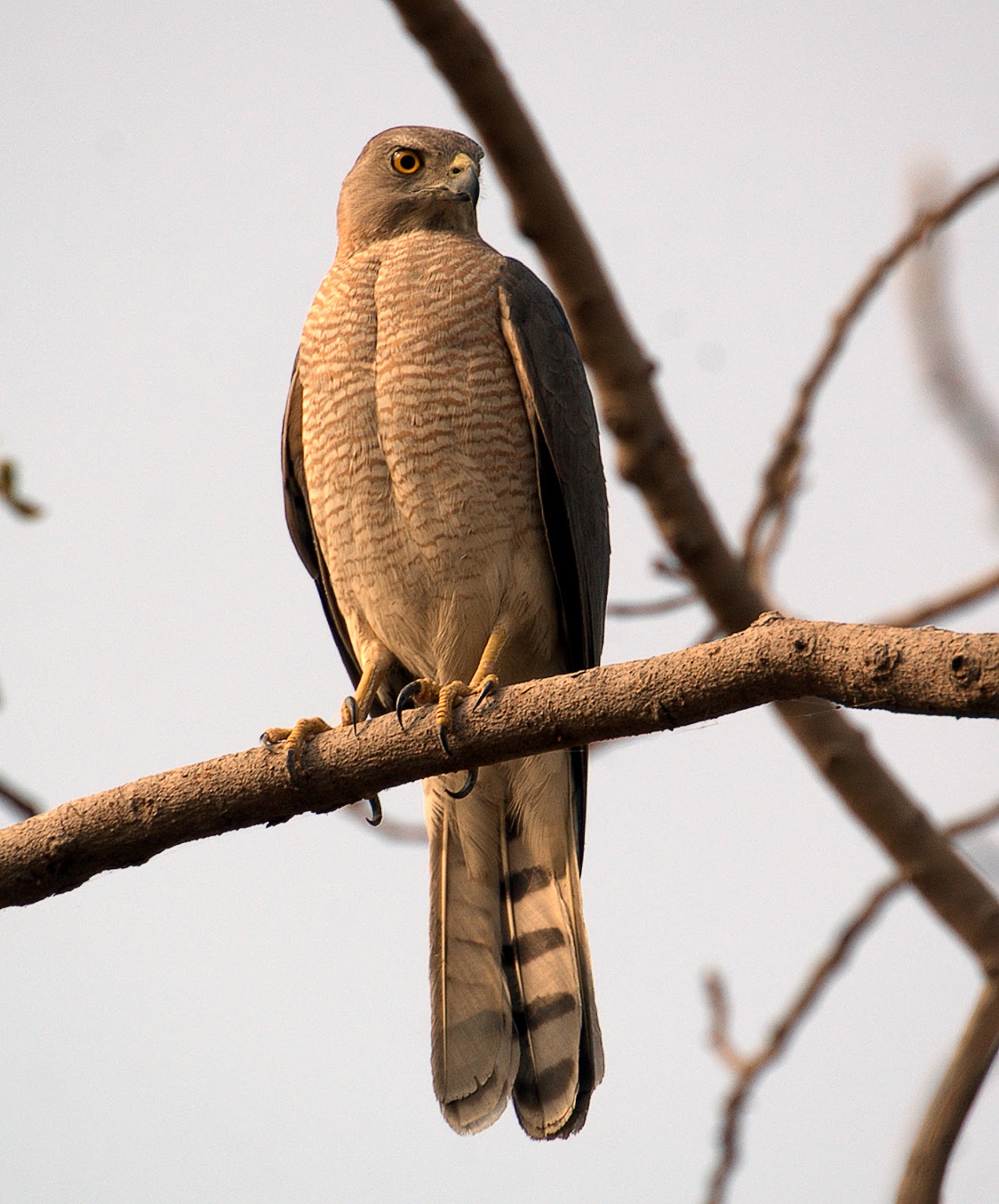Urban Birds of Prey (Part I)
Raptors are ‘birds of prey’ and they are one of the most fascinating hunters of all time. They are found throughout the world and they adapt very well to various habitats. They are known for their stealth, speed and killer instinct. Today let's look at some of our urban raptors (birds of prey).
 |
| Black Kite (Milvus migrans) |
One of the most common raptors that we see are kites. Here is the Black Kite (Milvusmigrans), a medium-sized bird of prey in the family Accipitridae. When they soar above in the sky you can easily identify them by their slender body and forked tails. The Black Kite can easily be called, 'Raptor of urban skies', as it is very abundant in our city.
 |
| Shikra (Accipiter badius) |
Next comes the Shikra (Accipiter badius), a small raptor often seen being bullied by the numerous crows found in our city. You will most likely get to see one in Sanjay Gandhi National Park. The bird has a very peculiar call that goes like, 'kik-ki.. kik-ki..'. It is a very skilled hunter and it is known to prey on birds and animals bigger than its size. In Hindi the word 'shikra' or 'shikara' means hunter; the birds has been given this name keeping the above fact in mind.
 |
| Common Kestrel (Falco tinnunculus) |
The Common Kestrel (Falco tinnunculus) is another bird of prey in the family Falconidae. These birds are usually see 'hovering' in heights looking for prey. While they 'hover', their wings remain in motion to keep them stationary in the sky, and their heads remain still which helps them track on the prey movement below. Once a prey is targeted, this bird swoops down in high speed to grab the prey with its sharp tallons and then it perches on a nearby branch to relish the amazing hunt. No wonder they are called 'birds of prey'!
 |
| Osprey (Pandion haliaetus) |
Osprey (Pandion haliaetus) is a fish-eating bird of prey. It is found throughout the world, except for Antarctica The Osprey is the second most widely distributed raptor species, after the Peregrine falcon. The Osprey's diet mostly comprises fish, and so it is often found near coastal areas. Maybe you could chance upon this bird on your next visit to a beach.
 |
| Peregrine Falcon (Falco peregrinus) |


_in_nest_in_Kolkata_I_IMG_2869.jpg)
Comments
The reason it appears to be timid is only because it is outnumbered (in this case, by the crows). There have been instances where it has preyed on young peafowls too!
Continue to observe the bird, i'm sure you will be surprised.